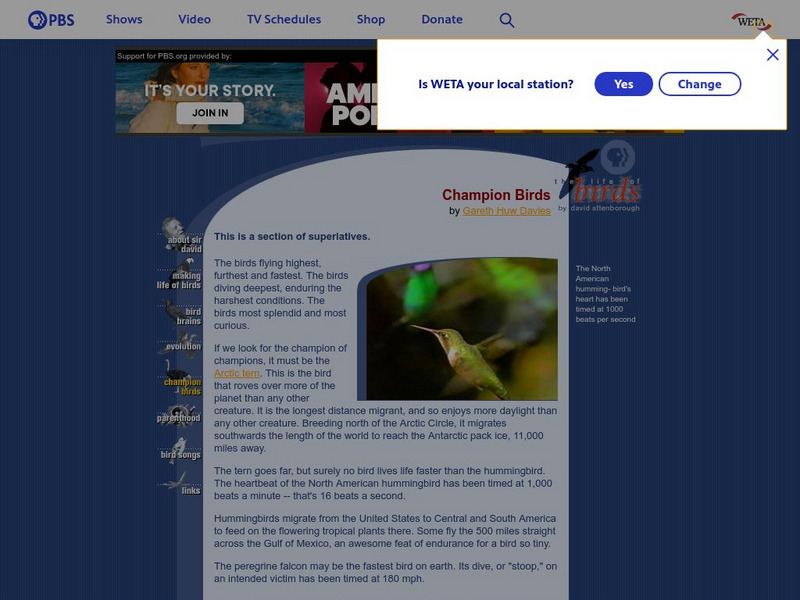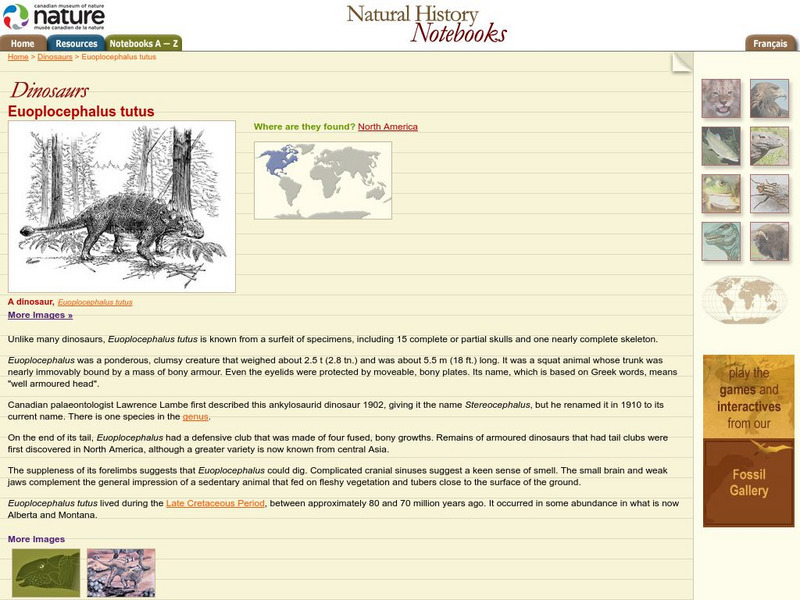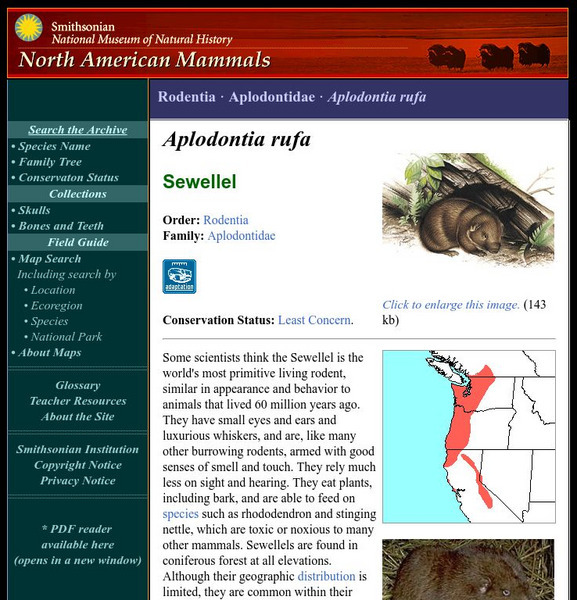TED Talks
Ted: Ted Ed: How Do Dogs See With Their Noses?
You may have heard the expression that dogs 'see with their noses.' But these creature's amazing nasal architecture actually reveals a whole world beyond what we can see. Alexandra Horowitz illustrates how the dog's nose can smell the...
PBS
Pbs: Champion Birds
The PBS video series "The Life of Birds" is accompanied with this site. There are articles about several aspects of birds and their behavior. This one chronicles the highest, fastest, and most extreme birds. There are lots of examples.
Other
Society for Neuroscience: Brain Facts [Pdf]
This is a publication on the human brain and how it works. Gives details on the neuron, how the senses interact with the brain and much more. PDF (requires Adobe Reader).
Canadian Museum of Nature
Canadian Museum of Nature: Euoplocephalus
Among some the interesting details of the Euoplocephalus is its armored tail. A detailed description is provided here.
Curated OER
Leffingwell and Associates: Olfaction
Provides a technical discussion of the anatomy and physiology involved in the receptors associated with the sense of smell. Includes pictures and formulas.
Curated OER
Leffingwell and Associates: Olfaction
Provides a technical discussion of the anatomy and physiology involved in the receptors associated with the sense of smell. Includes pictures and formulas.
Curated OER
Leffingwell and Associates: Olfaction
Provides a technical discussion of the anatomy and physiology involved in the receptors associated with the sense of smell. Includes pictures and formulas.
Curated OER
Leffingwell and Associates: Olfaction
Provides a technical discussion of the anatomy and physiology involved in the receptors associated with the sense of smell. Includes pictures and formulas.
Smithsonian Institution
National Museum of Natural History: American Mammals: Mountain Beaver
Some scientists think the Mountain Beaver is the world's most primitive living rodent, similar in appearance and behavior to animals that lived 60 million years ago. They have small eyes and ears and luxurious whiskers, and are, like...
PBS
Pbs Teachers: Scientific American: Science and the Brain
Describe the "mush-brain" effect, and test blindfolded subjects for their ability to identify items by smell. Explore the effect of biofeedback to help overcome illnesses, and attempt the mind-over-body techniques of visualizing and...
Michigan Reach Out
Newton's Apple: Why Do Bees Sting?
Lesson plan that explains why bees sting, how bee societies are organized and an activity for students to learn how bees communicate using pheromones.
Houghton Mifflin Harcourt
Holt, Rinehart and Winston: Elements of Literature: Imagery Chart [Pdf]
A short graphic organizer for students in studying the literary element of imagery. Includes a definition and chart with five sections with examples, one for each of the senses.
Inner Body
Innerbody: Nasal Passages
This site from Innerbody.com provides a general overview of how the human nasal passages work. A second page illustrates the use of the nasal cavity with animation.
Other
Ergonomics4 Schools: The Learning Zone: Aesthetics
The term 'aesthetics' concerns our senses and our responses to an object. If something is aesthetically pleasing to you, it is 'pleasurable' and you like it. If it is aesthetically displeasing to you, it is not pleasurable and you don't...


![Society for Neuroscience: Brain Facts [Pdf] Activity Society for Neuroscience: Brain Facts [Pdf] Activity](https://content.lessonplanet.com/knovation/original/113866-cd2169bec6c0105fc678c671521bd642.jpg?1661266885)





![Holt, Rinehart and Winston: Elements of Literature: Imagery Chart [Pdf] Graphic Holt, Rinehart and Winston: Elements of Literature: Imagery Chart [Pdf] Graphic](http://content.lessonplanet.com/resources/thumbnails/410053/large/bwluav9tywdpy2symdiwmduymc03nzuwlw5iazfsby5qcgc.jpg?1589985125)
